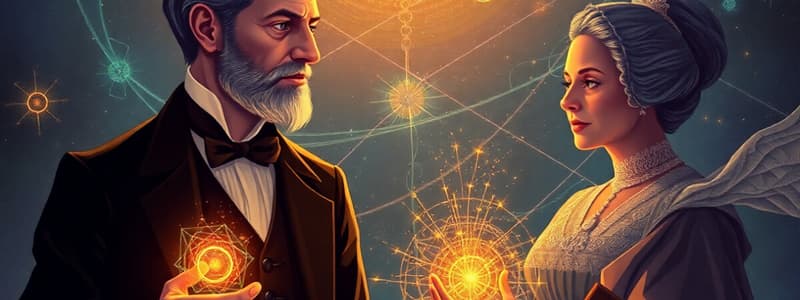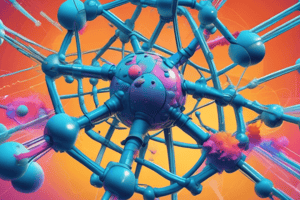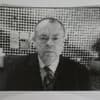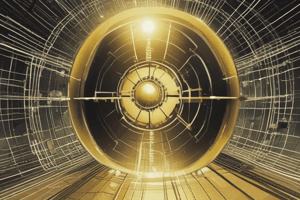Podcast
Questions and Answers
What observation led Becquerel to conclude that uranium emitted radiation independent of phosphorescence?
What observation led Becquerel to conclude that uranium emitted radiation independent of phosphorescence?
- The uranium salts became warm when exposed to sunlight.
- Photographic plates near uranium were exposed even in darkness. (correct)
- The uranium salts glowed faintly in the dark.
- The uranium salts emitted X-rays when energized.
What was Becquerel's initial area of research that serendipitously led him to the discovery of radioactivity?
What was Becquerel's initial area of research that serendipitously led him to the discovery of radioactivity?
- The effects of X-rays on photographic plates. (correct)
- The penetrating power of radioactive elements.
- The properties of phosphorescent materials.
- The chemical composition of uranium salts.
What significant contribution did Marie Curie make to the understanding of radioactivity?
What significant contribution did Marie Curie make to the understanding of radioactivity?
- She discovered the phenomenon of radioactivity.
- She identified the hazards of handling radioactive materials.
- She isolated and characterized radium and other radioactive elements. (correct)
- She developed safety procedures for working with radioactive substances.
Which incident highlighted the initially underestimated dangers of working with radioactive materials?
Which incident highlighted the initially underestimated dangers of working with radioactive materials?
What honor was Marie Curie awarded twice, setting a scientific precedent?
What honor was Marie Curie awarded twice, setting a scientific precedent?
What personal tragedy impacted Marie Curie's life during her scientific career?
What personal tragedy impacted Marie Curie's life during her scientific career?
How did Marie Curie contribute to science after her husband's death?
How did Marie Curie contribute to science after her husband's death?
The phenomenon of radioactivity involves which fundamental atomic process?
The phenomenon of radioactivity involves which fundamental atomic process?
What was the primary focus of Marie Curie's second Nobel Prize?
What was the primary focus of Marie Curie's second Nobel Prize?
What does Marie Curie's quote, "One never notices what has been done; one can only see what remains to be done," reflect about her perspective on scientific progress?
What does Marie Curie's quote, "One never notices what has been done; one can only see what remains to be done," reflect about her perspective on scientific progress?
Flashcards
Henri Becquerel
Henri Becquerel
French physicist who discovered natural radioactivity.
Natural Radioactivity
Natural Radioactivity
The emission of radioactive particles from materials like uranium.
Radioactivity
Radioactivity
Energy released when atoms disintegrate into different forms.
Marie Curie
Marie Curie
Signup and view all the flashcards
Radium
Radium
Signup and view all the flashcards
Radiation Sickness
Radiation Sickness
Signup and view all the flashcards
Pierre Curie
Pierre Curie
Signup and view all the flashcards
Safety Procedures in Radioactivity
Safety Procedures in Radioactivity
Signup and view all the flashcards
Nobel Prize
Nobel Prize
Signup and view all the flashcards
Quote by Marie Curie
Quote by Marie Curie
Signup and view all the flashcards
Study Notes
Antoine Henri Becquerel
- French physicist, first to discover natural radioactivity
- 1852-1908
- Investigated X-rays, noticed uranium emits radioactive particles
- Connected phosphorescence (light-emitting) to X-rays
- Placed uranium salt on photographic plates, exposure even in dark
- Proved uranium emitted radiation.
- Unit of radioactivity named after him: becquerel
Marie Curie
- Coined the term "radioactivity"
- Described how atoms disintegrate and release energy
- Isolated pure radium in 1910
- Nobel Prize in 1911 for chemistry
- Research on radium.
- Awarness of dangers associated with radium
- 1894
- Tradedgy of Pierre's death
- managed to raise her two daughters and take over husband's professorship
Studying That Suits You
Use AI to generate personalized quizzes and flashcards to suit your learning preferences.





